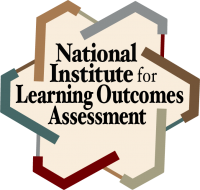Description
The assignment introduces first semester students to the research and analytical skills required to create a visual storyboard or mood board. Students undertake a trip to a medieval museum collection and research material on an artifact of their choice. They create a storyboard from the images and analyze them for color, mood and texture, then add supporting material in the form of fabric and color swatches, analyzing how visual information can be translated into a textile design. Formatted citations are required for all visual material. This assignment could be useful for instructors giving visual research assignments (and requiring citations) in all areas of Art & Design, as well as programs that focus on advertising, marketing or product development.
Background and Context
The assignment is given in Introduction to Textile and Surface Design: Vocabulary, Styles and Sources, a required class for Textile/Surface Design majors in the 1st semester. For the majority of students this is the first time they are asked to research and evaluate visual information and compose a storyboard. The assignment measures the following DQP proficiencies.
Broad and Integrative Knowledge
- Uses recognized methods of each core field studied, including the gathering and evaluation of evidence, in the execution of analytical, practical or creative tasks.
Intellectual Skills Use of Information Resources
- Identifies, categorizes, evaluates and cites multiple information resources so as to create projects, papers or performances in either a specialized field of study or with respect to a general theme within the arts and sciences.
Alignment and Scaffolding
This assignment introduces students to the idea of gathering and evaluating information to be used creatively and creates the groundwork for more advanced trend research in later courses. Storyboards are required for almost every subsequent design project.
Reflections
The assignment has been taught for several years and has generally created good outcomes. Aspects of the assignment that students seem to find most challenging are: – Where to find information, how to evaluate reliability of sources, how to properly cite sources. – Analyzing visual information to create a color palette. – Analyzing visual information to make a connection to existing fabrics. I have addressed these issues by working closely with the library and taking the class to an orientation session with a specific focus on citations. An embedded librarian can be closely involved with the specifics of the assignment and become the go-to person with office hours for the students. I have created a handout with instructions on why and how to cite work specifically for the class (MLA format).
In future classes I want to experiment with giving a small practice project related to this assignment to make sure all students understand the requirements (e.g. I provide fabric swatches and photographs and let students match related items). Ungraded interim presentations among students may be an additional tool to improve the final outcomes. I would like to strengthen the connection of research skills to design skills by highlighting how storyboards are used in the industry and how the skills acquired will benefit the students in future classes. For a follow-up, more advanced visual story board assignment please refer to Nomi Kleinman’s assignment, Design and Color Trend Development.
Please select an option
The assignment library and the assignments within are licensed under a Creative Commons Attribution 4.0 International License. By clicking “Ok” you agree to cite each assignment (including modifications), with the provided citation on the assignments downloaded from this site.
OK

